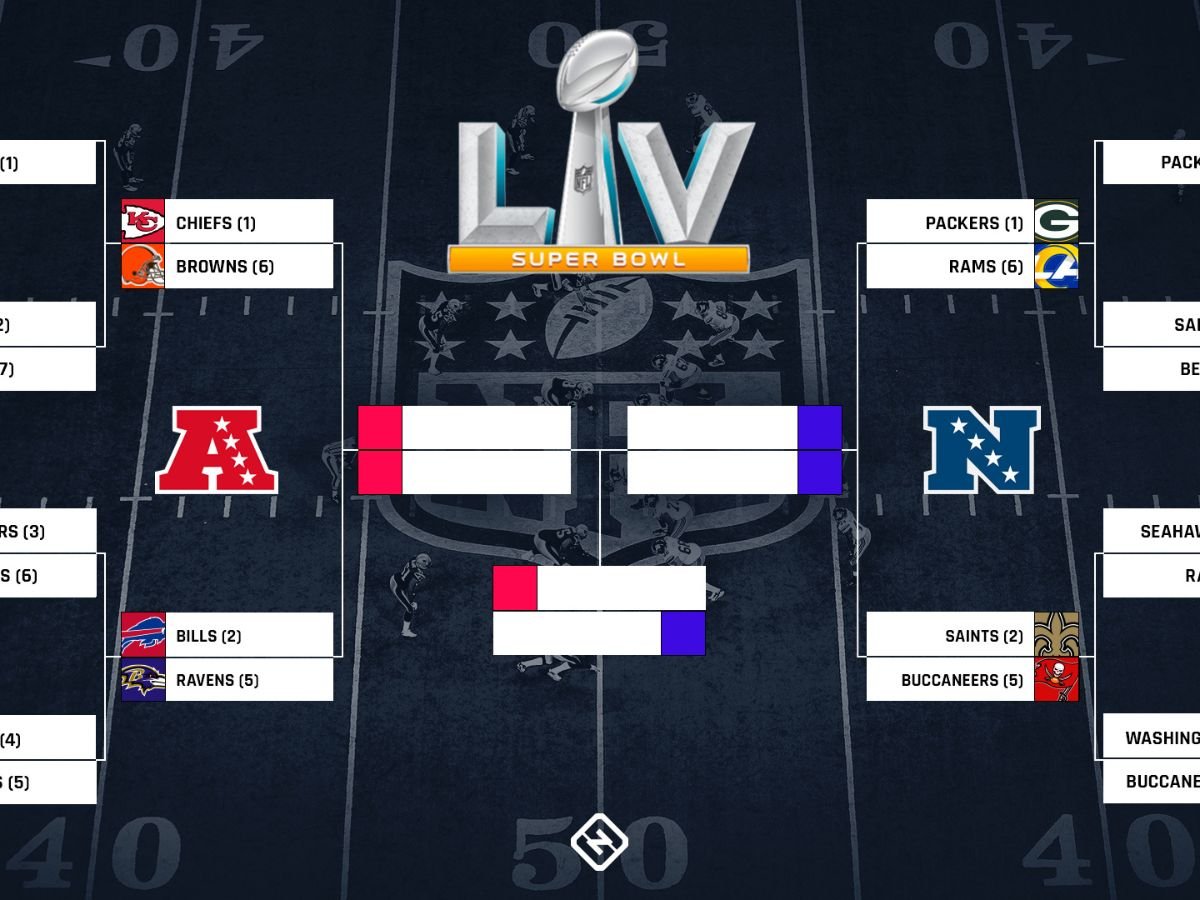The NFL playoff seeding is a fascinating and dynamic process that determines the journey to the Super Bowl. Let’s break it down to understand it better.
What Does Seed Mean in NFL?
In the NFL, “seed” refers to the ranking of teams within their respective conferences based on their regular season performance. This ranking determines the matchups in the NFL playoffs. Higher-seeded teams typically have a better record and often receive advantages such as hosting playoff games against lower-seeded teams.
Read: How is NFL Schedule Determined? Explaining the Complete Process
Overview of NFL Playoff Seeding
The NFL, comprising the American Football Conference (AFC) and the National Football Conference (NFC), sends a total of 14 teams to the playoffs. This format, expanded from the previous 12-team system, includes seven teams from each conference: the four division winners and three Wild Card teams. The No. 1 seed in each conference, typically the team with the best overall record, secures a crucial first-round bye, catapulting them directly into the second round.
The Importance of Seeding and Division Winners
The four division winners in each conference are awarded the top four seeds based on their win-loss records. The higher a team’s seed, the greater its perceived advantage. For example, the No. 1 seed not only gets a first-round bye but also enjoys home-field advantage throughout the playoffs, a significant factor considering the intensity and pressure of postseason games.
Wild Card Teams and Their Seeding
The Wild Card teams, seeded fifth to seventh, are those with the best records outside the division winners. The seeding of these teams is equally important, as it determines their matchups and the possibility of playing at home. The No. 5 seed, for instance, is the strongest of the Wild Card teams and faces the ostensibly weakest fourth seed of the division winners.
The Playoff Bracket: From Wild Card Weekend to the Super Bowl
The playoff journey begins with the Wild Card Weekend, where six games are played across both conferences. The matchups are decided based on seeding, with the higher seed generally playing at home. The No. 2 seed faces the No. 7 seed, No. 3 plays No. 6, and No. 4 confronts No. 5. The winners advance to the Divisional Round, followed by the Conference Championships, and finally, the Super Bowl.
Re-Seeding in Later Rounds
A unique aspect of the NFL playoffs is the re-seeding after each round. This system ensures that the highest remaining seed plays the lowest remaining seed, maintaining a competitive balance and rewarding teams with better regular-season records.
Impact of the 17-Game Season
The NFL’s shift to a 17-game regular season, while not drastically altering the playoff structure, has extended the playoff race, adding another layer of strategic depth to how teams approach their season. It has kept the playoff hopes alive for more teams towards the end of the season, intensifying the competition.
Why Expand to 14 Teams?
The decision to expand the playoffs to 14 teams was driven by several factors. Chief among these was the financial incentive, with more playoff games translating to increased revenue from broadcasting. Additionally, this expansion has enhanced fan engagement by keeping more teams in contention for longer, thereby maintaining interest and excitement in the latter stages of the regular season.
Home-Field Advantage and Its Impact
While the No. 1 seed enjoys a first-round bye and home-field advantage, the importance of home-field advantage for other seeds, especially the No. 2 seed, cannot be overstated. Playing at home can provide a significant psychological and physical edge, often seen as pivotal in tight, high-pressure playoff games.
The Changing Landscape
The evolution of the NFL playoff seeding reflects the league’s continuous efforts to balance competitiveness, financial viability, and viewer engagement. The move to a 14-team format has been met with mixed reactions, but it undeniably adds a new dimension to the playoff race, making the path to the Super Bowl more challenging and unpredictable.
The Takeaway
NFL playoff seeding is more than just a method for organizing postseason games; it’s a complex system that rewards regular-season performance, heightens competition, and enhances the overall excitement of the NFL playoffs. The recent changes to the playoff format have introduced new strategic considerations for teams and have kept fans engaged deeper into the season.







